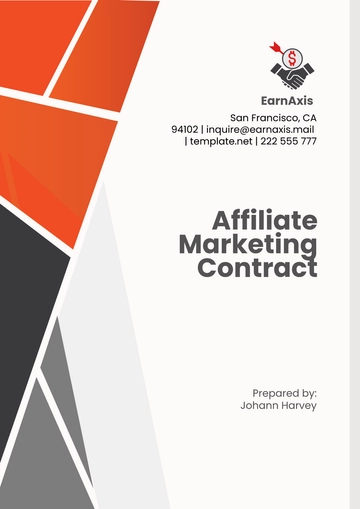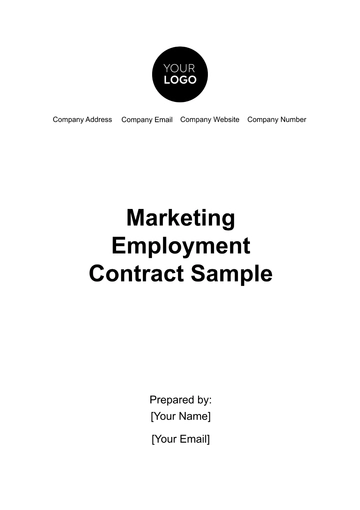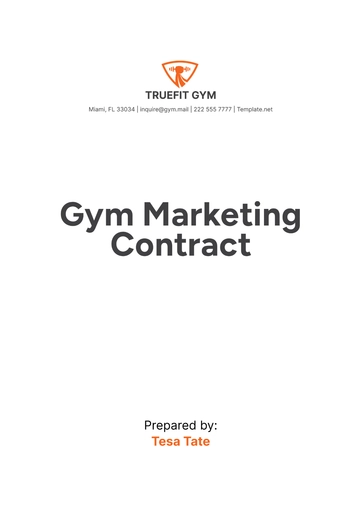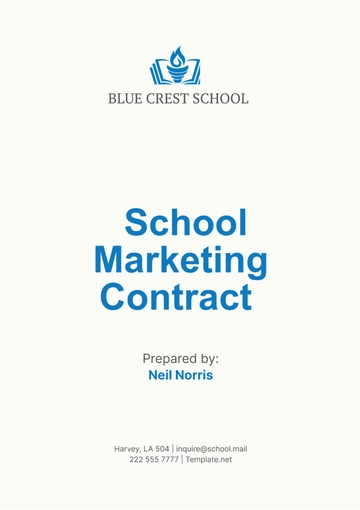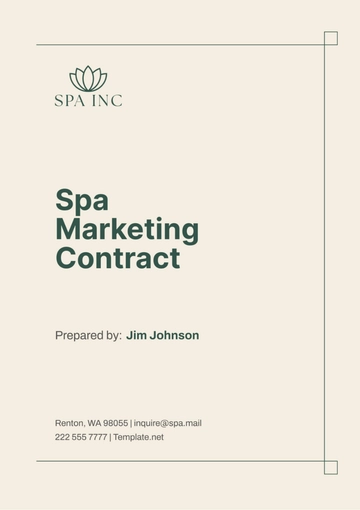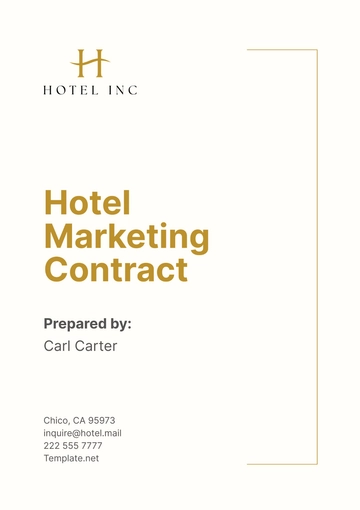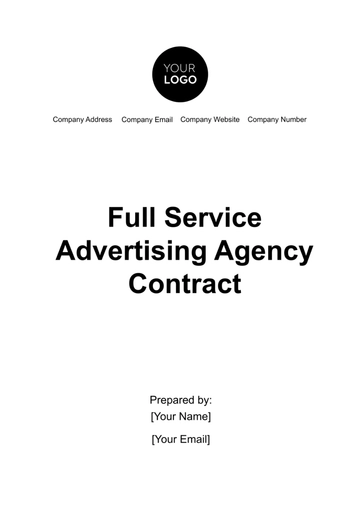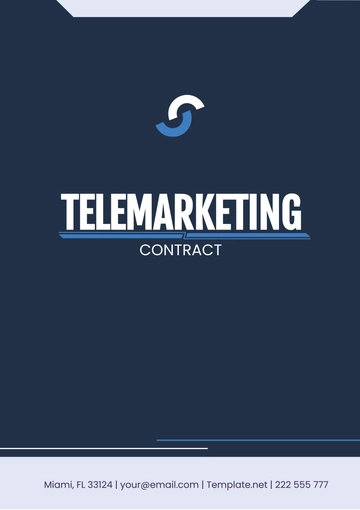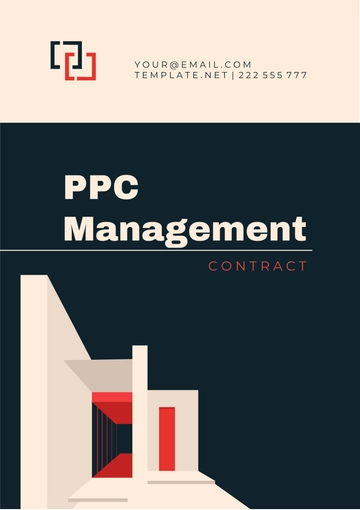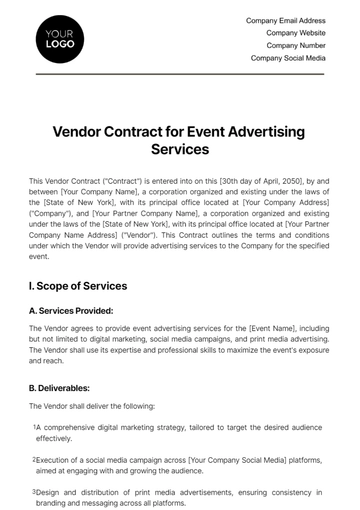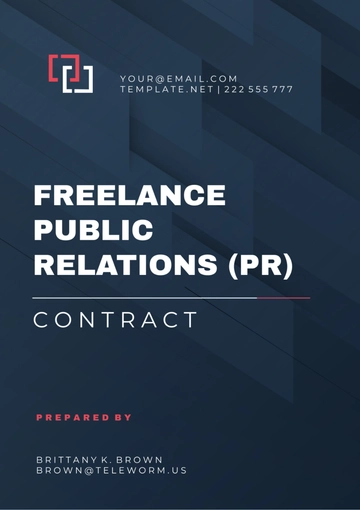Free Advertising Media Contract Negotiation Guide
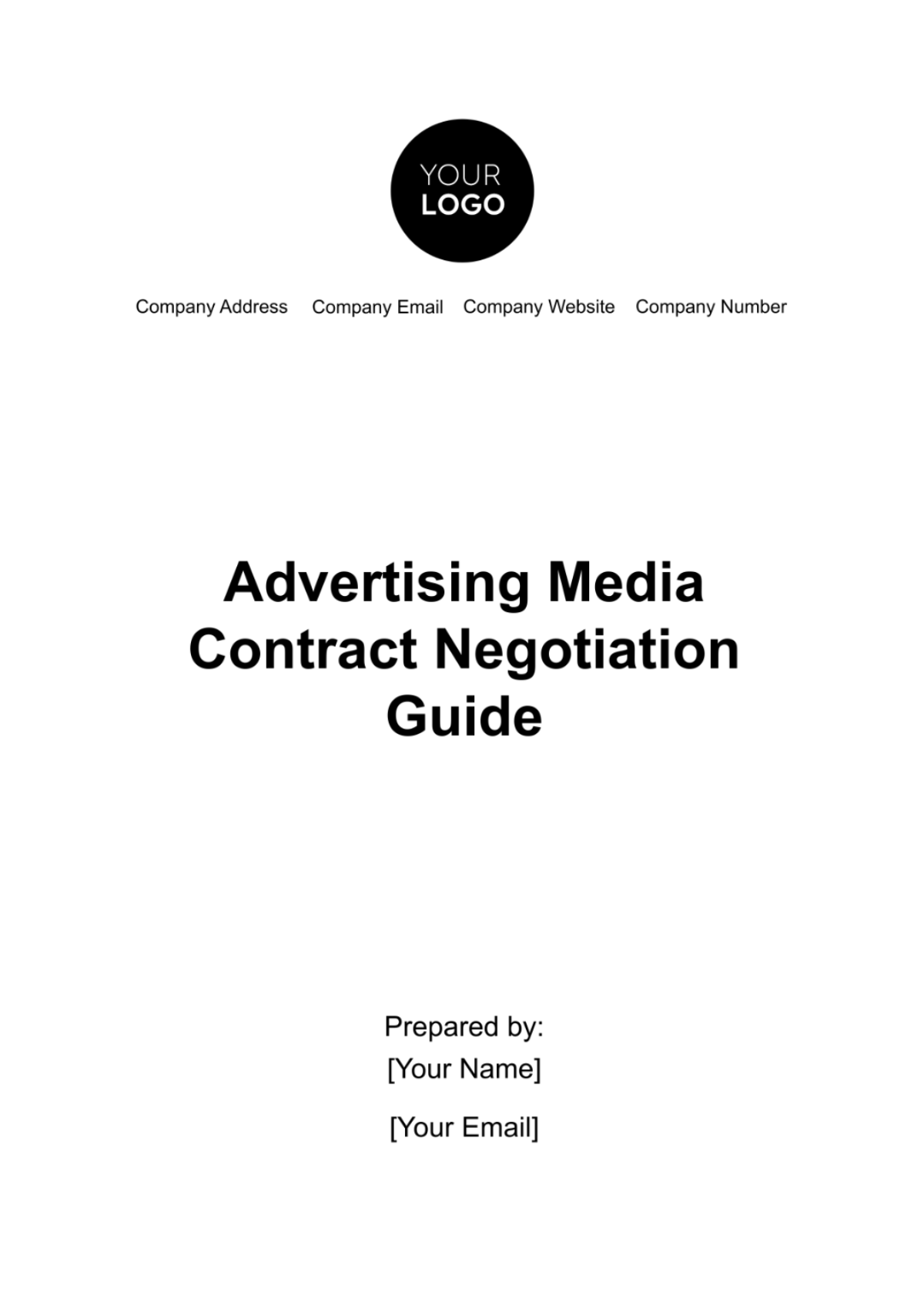
I. Introduction
This guide serves as a vital resource, offering a strategic blueprint to tackle the complexities of media contract negotiations effectively. This guide will delve into the nuances of negotiating across various media types, from mainstream television and print media to dynamic online and social media platforms. It will equip [Your Company Name]’s stakeholders with the necessary tools and insights to approach negotiations informed and prepared.
At the core of this guide is the emphasis on securing terms that maximize Return on Investment (ROI). This includes understanding market rates, leveraging [Your Company Name]'s unique market position, and crafting deals that offer measurable returns. The guide also highlights the importance of adaptability and innovation in negotiations, encouraging the exploration of creative partnership opportunities that can yield mutual benefits.
II. Understanding the Market
It is imperative for [Your Company Name] to stay abreast of the latest trends, pricing structures, and audience engagement rates to negotiate media contracts effectively. The following table provides insights to gain a clear understanding of where the market stands in terms of average media costs and the potential return on investment in terms of engagement:
Media Type | Average Cost | Average Engagement Rate |
Television | $50,000 per slot | 4.5% |
Online Advertising | ||
Social Media | ||
Print Media | ||
Outdoor Advertising |
III. Pre-Negotiation Preparation
This phase lays the groundwork for successful negotiations, ensuring that the company approaches discussions with a clear understanding of its goals, budgetary constraints, and the current market environment.
A. Market Analysis
Content: Conducting a detailed market analysis involves researching current market rates for various advertising media and understanding emerging trends. This includes examining industry reports, competitor strategies, and audience preferences.
Objective: The objective is to enter negotiations armed with data that can support your bargaining position and enable informed decision-making.
B. Budget Planning
Content: Effective budget planning requires [Your Company Name] to define its advertising budget while maintaining some degree of flexibility. This involves allocating funds to different media channels based on their expected ROI and the company’s overall marketing strategy.
Objective: The goal is to have a clear financial framework for negotiations, ensuring that media buys align with the company's financial capabilities and strategic objectives.
C. Objective Setting
Content: Setting clear objectives for what [Your Company Name] aims to achieve through its media buys is vital. This includes defining specific goals for audience reach, engagement levels, and the desired ROI.
Objective: The purpose here is to have a set of defined metrics and targets that guide the negotiation process, ensuring that the outcomes of the media contracts align with the company's broader advertising goals.
Through these pre-negotiation preparations, [Your Company Name] positions itself for successful media contract negotiations. This preparatory phase is not just about gathering information; it's about establishing a foundation for negotiations that are aligned with the company's strategic marketing goals and financial parameters.
IV. Negotiation Strategies
Entering media contract negotiations means more than just discussing prices—it's about presenting a compelling case that benefits both parties. This section outlines key negotiation strategies that [Your Company Name] can employ to secure favorable terms in media contracts. Each strategy focuses on leveraging the company's strengths and identifying mutually beneficial opportunities with media partners.
A. Value Propositions
Strategy: In negotiations, it's crucial to articulate the unique value that [Your Company Name] offers. This involves showcasing the strengths and successes of past campaigns, as well as providing insights into the audience demographics and behaviors that [Your Company Name] can reach effectively.
Objective: The aim is to differentiate [Your Company Name] from competitors, highlighting its unique offerings and the specific benefits it brings to the media partner.
B. Cost-Effective Packages
Strategy: Negotiating for cost-effective packages is about seeking more value for the investment. This could involve negotiating for bundled deals across various media platforms or securing longer-term contracts at more favorable rates. Additionally, it’s beneficial to explore opportunities for added value, such as extra ad slots, extended campaign durations, or inclusion in premium media spaces.
Objective: The goal is to maximize the value received for the advertising spend, ensuring that [Your Company Name] gets more reach and impact for its budget.
C. Flexibility and Creativity
Strategy: Staying flexible and open to creative solutions can open doors to unique advertising opportunities. This might include exploring non-traditional advertising mediums that could reach untapped audiences or proposing innovative collaboration ideas that are mutually beneficial.
Objective: The aim is to forge partnerships that are not just transactional but are creative and dynamic, enabling [Your Company Name] to stand out in the marketplace and potentially access new audience segments.
By employing these strategies, [Your Company Name] can enter media contract negotiations with a strong footing. These approaches are designed to not only secure favorable contract terms but also to build lasting relationships with media partners, paving the way for future collaborations and successes.
V. Contract Essentials
The core of successful media contract negotiations lies in the details of the contract itself. For [Your Company Name], understanding and stipulating the essentials of a media contract is fundamental to ensuring that the agreements are not only beneficial but also clear and enforceable.
A. Clear Terms and Conditions
Importance: Clearly defined terms and conditions form the backbone of any media contract. This includes specific details about the deliverables, such as the type and number of advertisements, the platforms they will be displayed on, and the duration of the campaign.
Objective: The goal is to establish a mutual understanding and agreement on what is expected from both parties, eliminating ambiguity and reducing the potential for disputes.
B. Performance Metrics
Importance: Incorporating specific Key Performance Indicators (KPIs) and setting up regular performance reviews are crucial for evaluating the success of the advertising campaign.
Objective: The aim is to have a quantifiable means of assessing the campaign's impact, ensuring that the media partner is meeting the expected standards and that [Your Company Name] is getting the desired return on its investment.
C. Cancellation and Renewal Clauses
Importance: Clearly defined clauses for contract termination and renewal provide protection and flexibility for [Your Company Name]. This includes stipulating the conditions under which either party can terminate the contract, any penalties or liabilities associated with early termination, and the process of contract renewal.
Objective: The goal is to ensure that [Your Company Name] retains control over the continuation of the partnership and can make informed decisions about contract renewals or terminations based on the campaign's performance and changing market conditions.
By meticulously detailing these contract essentials, [Your Company Name] can establish robust and transparent agreements with media vendors. These provisions are instrumental in creating a solid foundation for successful advertising partnerships and for navigating the complexities of media contract negotiations.
VI. Post-Negotiation
The conclusion of a media contract negotiation marks the beginning of a critical phase in the advertising process for [Your Company Name]. Post-negotiation, the focus shifts to evaluating the effectiveness of the contracts and adapting strategies as needed. This continuous cycle of assessment and adaptation is essential for ensuring that the media buying efforts align with the company's evolving marketing goals and the dynamic nature of the advertising industry.
A. Performance Tracking
Approach: After securing media contracts, it's crucial to implement a system for ongoing performance tracking. This involves regularly monitoring key metrics that were outlined in the contract, such as audience reach, engagement rates, conversion numbers, and overall ROI.
Objective: The purpose of performance tracking is to measure the real-time effectiveness of the advertising campaigns. This data serves as a benchmark for evaluating whether the media contracts are delivering the expected value and helps identify areas where campaigns may need adjustments.
B. Feedback Loop
Approach: Establishing a feedback loop with media partners is vital for continuous improvement. This should involve regular meetings or communications to discuss campaign performance, share insights, and address any challenges. Feedback from the media partners can also provide valuable external perspectives on the campaign's impact and suggestions for enhancement.
Objective: The goal of maintaining an open feedback loop is to foster a collaborative relationship with media partners. This collaboration can lead to more effective campaigns, as both parties work together to optimize strategies based on shared insights and performance data.
C. Adaptation
Approach: Based on the performance data and feedback received, we should be ready to renegotiate contract terms or adjust media buying strategies as necessary. This might include shifting budgets between media channels, altering campaign content, or exploring new advertising opportunities that have emerged.
Objective: The aim of adaptation is to ensure that [Your Company Name]'s media buying strategy remains effective and relevant. By being willing to make changes based on performance data and market trends, the company can stay agile and responsive to the dynamic advertising landscape.
Through diligent post-negotiation evaluation and a willingness to adapt, [Your Company Name] can ensure that its media contracts are not just agreements on paper, but dynamic tools that contribute to the company's ongoing marketing success.
VII. Conclusion
Effective media contract negotiation is indeed a dynamic and ongoing process, one that demands continuous vigilance and strategic foresight. For [Your Company Name], mastering this art is not just about achieving short-term gains; it's about laying the groundwork for long-term success in an ever-shifting advertising landscape. By staying informed about market trends and maintaining a deep understanding of the evolving media ecosystem, [Your Company Name] positions itself not just as a participant in the market, but as a shaper of its own advertising destiny.
With each successful campaign and negotiated contract, [Your Company Name] strengthens its market presence, reinforcing its reputation as a savvy and forward-thinking player in the advertising world. Ultimately, the strategies and insights contained within this guide are more than just tools for negotiation; they are stepping stones towards achieving enduring success and a prominent position in the advertising industry.
- 100% Customizable, free editor
- Access 1 Million+ Templates, photo’s & graphics
- Download or share as a template
- Click and replace photos, graphics, text, backgrounds
- Resize, crop, AI write & more
- Access advanced editor
Negotiate your media contracts with our Advertising Media Contract Negotiation Guide Template! This customizable guide from Template.net is editable, allowing you to create a detailed negotiation guide. The AI Editor Tool simplifies the guide generation and editing, helping you secure the best contracts for your business! Edit and download now!
You may also like
- Rental Contract
- Contractor Contract
- Contract Agreement
- One Page Contract
- School Contract
- Social Media Contract
- Service Contract
- Business Contract
- Restaurant Contract
- Marketing Contract
- Real Estate Contract
- IT Contract
- Cleaning Contract
- Property Contract
- Supplier Contract
- Partnership Contract
- Food Business Contract
- Construction Contract
- Employment Contract
- Investment Contract
- Project Contract
- Payment Contract
- Student Contract
- Travel Agency Contract
- Startup Contract
- Annual Maintenance Contract
- Employee Contract
- Gym Contract
- Event Planning Contract
- Personal Contract
- Nursing Home Contract
- Law Firm Contract
- Work from Home Contract
- Software Development Contract
- Maintenance Contract
- Music Contract
- Amendment Contract
- Band Contract
- DJ Contract
- University Contract
- Salon Contract
- Renovation Contract
- Photography Contract
- Lawn Care Contract

